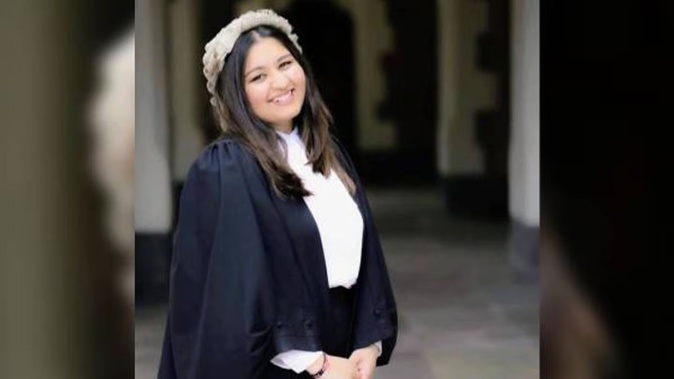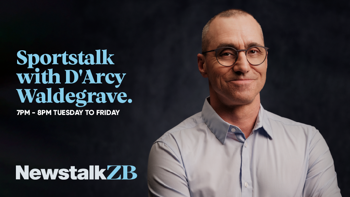

A Tesla was airborne for more than 20m after hitting a dip on a road, slid for around 60m before crashing into a bank and sliding a further 20m, smashed through a power pole and rolled into a ditch where it caught fire, a serious crash analyst has told a court.
Young Auckland lawyer Shubham Kaur, known as Khushi, was killed in the crash.
Her friend, Saurbh Sharma, 26, was behind the wheel and is defending a charge of careless driving causing her death in a judge-alone trial in the Huntly District Court.
But Sharma’s counsel Shafraz Khan attempted to pour cold water on serious crash unit analyst Senior Constable Christopher Johnson’s airborne theory and instead suggested it could have been a period where his client was yet to react to what was happening.
The vehicle’s electronics and their capability have come under the microscope during the second day of the trial, while further - challenged - detail was revealed from the serious crash report.
Sharma’s vehicle lost control after hitting a “dip” in Dawson Rd, Taupiri, on the afternoon of January 4, 2022.
Johnson talked through his findings, in which he submitted Sharma lost control when he hit the dip, then was likely airborne for about 26m, before slightly arching to the right, then the left, and continuing on a wide slide for more than 60m into an embankment, before sliding another 28m, smashing through a power pole, and rolling to an eventual stop.
The crash brought power lines down which then began crackling. A fire started shortly afterwards, completely destroying the car, its remnants described by one officer as a “metal carcass”.
Crash analyst Senior Constable Ian Cornelius analysed the gouge and scratch marks from the impact zone on the “dip”.
He found the Tesla’s sway bar, a plastic shield that protects the suspension, hit the dip first, along with the three bolts that hold the shield in place, due to the vehicle being compressed “with great pressure”.
Defence counsel Shafraz Khan quizzed Cornelius at length about the Tesla’s technological features, how he came up with his measurements of the gauge marks, even putting to him that a Tesla could be called a “smart car”.
“Well they’re smarter than your older cars, but they’re electric cars ... they’re no smarter than a lot of other cars out there.
“It’s just that they’re electric and have a Tesla badge on it that makes it different.”
Cornelius cited BMW users’ ability to ring Germany to unlock their vehicles for them.
Yesterday, Sergeant Leo Belay described the Tesla’s remains as a “metal carcass”.
Today, Senior Constable Johnston detailed the vast amounts of damage caused to the car, and what little remained of it.
Johnston found Sharma lost control of the Tesla after hitting the “dip” travelling at more than 100km/h, while noting there were no warning signs of the dip.
The dip and speed were contributing factors in the crash; Sharma losing control of the Tesla was a causative factor.
/cloudfront-ap-southeast-2.images.arcpublishing.com/nzme/KWEEM34LRZCMPGQRGB4URRSRYE.jpg)
Saurbh Sharma, of Auckland, outside the Huntly District Court where he is defending a charge of careless driving causing the death of Shubham Kaur, a lawyer from Auckland, on Dawson Rd in Taupiri on January 4, 2022. Photo / Belinda Feek
He was able to track the car’s movements by using the skid marks, which showed the vehicle going straight.
Sharma told Constable Daniel Zainey at the scene the crash occurred because he swerved to avoid a raccoon.
“As someone born and raised in New Zealand, I’m aware that we don’t have raccoons but it didn’t seem the time and place to point that out,” Zainey told the court yesterday.
Zainey added Sharma seemed concerned about what was going to happen to him when questioned at the scene after the crash.
“He said, ‘am I going to jail, what’s going to happen?’ ... he was really concerned,” Zainey said.
Johnston today confirmed the vehicle’s computer system, or “black box”, was destroyed by fire so any critical details it held - including Google Maps travel information - were unable to be confirmed.
While he couldn’t confirm how fast Sharma was going when he hit the dip, he said if Sharma was going 100km/h he would have come to rest at the power pole - instead of smashing through it, and then rolling to a stop.
However, in cross examination by Khan, he cast doubt over Johnston’s assessment the car was airborne.
Khan said it could have just been when Sharma was yet to react to the car hitting the dip.
Johnston replied there was still the ability for the car’s autonomous braking to kick in.
Khan shot back if that was the case, his client wasn’t in control of the vehicle at the time.
“No,” Johnston replied.
Khan then put to Johnston that with all the automated controls the Tesla had - autonomous braking, emergency brake assist and YAW, or brake, control - the vehicle could have taken over before Sharma had a chance to do anything.
“Yeah, potentially,” Johnston replied.
Khan also put the heat on around the SCU’s friction testing, whereby vehicle’s ability to stop suddenly on a piece of road is tested.
He confirmed with Johnston they used a different-sized vehicle to test Dawson Rd, instead of a Tesla.
Johnston said it didn’t matter what type of vehicle was used.
“But weight on tyres affects friction tests,” he asked Johnston.
“Correct,” Johnston replied.
Divesh Goundar is friends with Kaur, known as “Khushi”, and Sharma.
He described Kaur, who he’d known for three years, as a “talkative, bubbly, loves to have fun, adventurous girl”.
The trial, before Judge Glen Marshall, was adjourned, part heard, to recommence at a later date.
Belinda Feek is an Open Justice reporter based in Waikato. She has worked at NZME for nine years and been a journalist for 20.

Take your Radio, Podcasts and Music with you









